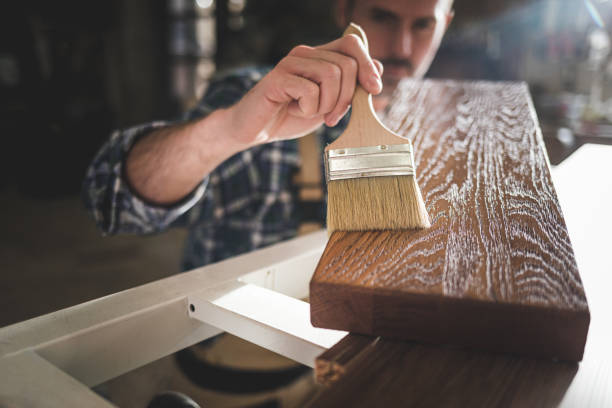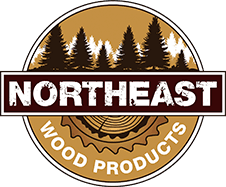When designing or remodeling a bathroom, using natural wood is a popular choice. Natural wood’s warm touch and beautiful aesthetics, coupled with a wide variety of options and reasonable pricing, give it a strong advantage over many engineered materials used today. Today we will discuss the most important aspects of using natural wood in your bathroom, helping you make the best decision for your needs.
Why use natural wood in your bathroom?
There are many benefits to using natural wood in a bathroom. The organic features found in natural wood are nearly impossible to replicate in engineered materials. Along with a glowing look, natural wood possesses a warm touch and softer feel when compared to stone or laminate.
Wood is also a renewable resource, and therefore can be replenished over time through natural means. Contrary to stone or engineered materials, which are not renewable and must be constantly sourced or created to be replaced.
Which wood species should be used as a bathroom?
Choosing the right species is vital in bathrooms. Due to repeated high condensation periods and frequent contact with water, rot- and mildew-resistant natural wood is ideal. Some of the most popular choices include:
- Teak. Teak is a premium option hardwood, as it produces natural water-resistant oils that make it extremely resistant to rot and water damage. This natural resistance requires minimal finishing and maintenance. NOTE: Teak can be difficult to source in some areas.
- Birch. Birchwood is a beautiful light-colored wood option. With a uniform closed grain, it not only looks great but has a strong waterproof attribute. Birch is also widely available.
- Maple. Similar to birchwood, maple has a closed grain that attributes to its waterproof nature and it’s often widely available. Maple has a rich color that is easy to bring out with the right finish. Maple can shrink from constant moisture exposure if not properly finished.
- Oak. Oak’s tight grain gives it a strong resistance to water damage such as warping and water absorption. Oak accepts finishes easily and can be painted as well.
- Douglas Fir. Douglas fir is a strong choice for bathroom spaces, with a light color and surface that is easy to finish. Douglas firs do have a natural resistance to water but will need a proper finish when used in high moisture spaces.
- Cedar. Cedar can have a distinct reddish color that may be deepened with the right finish. Cedar also has a natural resistance to rot and moisture damage, making it ideal for use in bathroom spaces.
How do you preserve and maintain natural wood in the bathroom?
Once you’ve chosen the right species for your bathroom’s aesthetics, selecting the proper finish will be your next step. Finishes such as oils, lacquers, shellacs, and varnishes are all widely used on natural wood – each has its own benefits and effects on final appearance.

Shellacs should be avoided as a natural wood finish in bathrooms due to their low resistance to moisture, which can quickly discolor the shellac and subsequently the color of your natural wood. Varnishes and acrylic lacquers are the most water-resistant finishes available, making them a strong choice for longevity.
With all finishes, proper application is key to maintaining the natural beauty of your wood. It’s best to take the time to practice applying your chosen finish on scrap pieces of the wood you’re using for your project. Testing your finish allows you to not only practice your application skills, but also reveals how your finish will affect the aesthetics of your wood.
Premium wood options, such as teak, typically require minimal maintenance, though all wood options will require periodic touchups to the finish to preserve the look.
What kind of budget is needed for natural wood options?
As with most projects, choosing your natural wood will depend on your budget. Premium species like teak can run between $25 and $30 per board foot, making it the most expensive option available. More common species such as oak, cedar, maple, and birch range from $5 to $9 per board foot. With the relatively low cost of these widely available species, adding a proper finish is often worth the cost.
(Keep in mind that lumber prices fluctuate, so the prices given above may be different when you read this post.)
The natural appearance of solid wood will add character and warmth to any bathroom space. With the information found in this article, you can feel confident in choosing the right natural wood species for your bathroom project.

